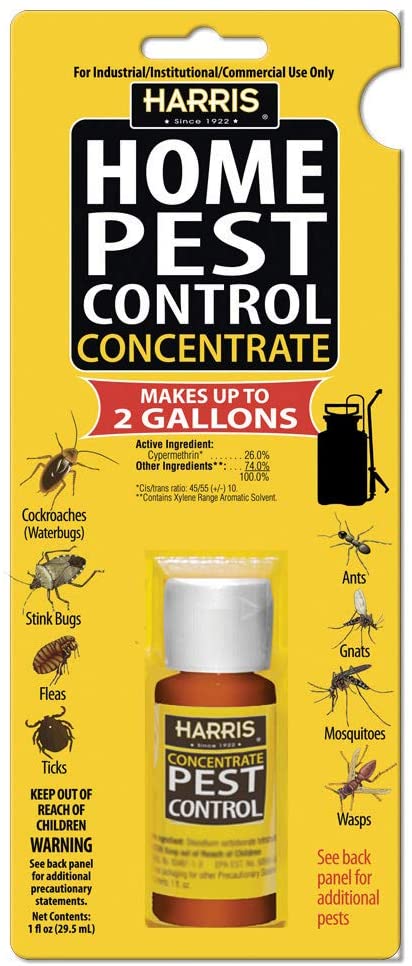Effective A1 Bed Bug Treatment in Charlotte - Safe and Proven Methods
Wiki Article
Bed Pest Treatment Malfunction: Comparing Chemical Vs. Non-Chemical Solutions
In the world of parasite control, especially when dealing with the relentless problem of bed insects, the option between chemical and non-chemical treatment remedies can be a pivotal one. Both approaches offer distinct benefits and disadvantages, influencing elements such as efficiency, safety and security considerations, and overall expense. By taking a look at the nuanced details of each technique, a more clear understanding of which course to go after in dealing with a bed insect infestation can be obtained.Performance of Chemical Treatments
Chemical treatments for bed pest infestations have actually been widely recognized for their quick and powerful efficacy in eliminating these pests. When taking into consideration the efficiency of chemical treatments, it is critical to recognize that they can provide a extensive and fast option to a bed bug problem.Furthermore, chemical therapies have the benefit of supplying residual effects, meaning that they can proceed to remove bed bugs even after the first application. This recurring action is particularly beneficial in combating any type of possible re-infestations. Furthermore, the quick action of chemical therapies can bring relief to people dealing with serious bed bug problems, enabling them to gain back control of their space rapidly.
Security Worry About Chemical Solutions
When utilizing chemical solutions for bed pest treatment is guaranteeing the safety and security of residents and the setting,One important facet that requires careful factor to consider. While chemical therapies can be reliable in getting rid of bed insects, they may present risks otherwise handled correctly. Among the key safety worry about chemical remedies is the prospective harm they can trigger to human health. Exposure to specific chemicals used in bed pest therapies can lead to breathing problems, skin irritability, or other negative responses, particularly in people with pre-existing problems or sensitivities. Furthermore, inappropriate application or dose of chemical pesticides can cause poisonous deposits remaining in the cured location, posing long-lasting health and wellness threats to occupants.Furthermore, the ecological influence of chemical services is one more substantial consideration. Some chemicals utilized in bed insect therapies may be damaging to helpful bugs, wildlife, and communities if they seep into the soil or water systems. It is vital to utilize chemical treatments carefully, adhering to safety and security guidelines, and considering much less poisonous options to mitigate these risks and ensure the effective and safe monitoring of bed bug problems.
Advantages of Non-Chemical Methods
Considering the possible security issues and ecological influence related to chemical services for bed pest therapy, exploring non-chemical methods presents an appealing choice with numerous distinctive benefits. Non-chemical techniques provide a much safer option for households, especially those with people, youngsters, or family pets conscious rough chemicals. These approaches remove the risks of direct exposure to hazardous substances, reducing the capacity for unfavorable health effects. In addition, non-chemical therapies are eco friendly, as they do not add to air or water contamination, making them a lasting choice for bug control.Furthermore, non-chemical solutions can be reliable in targeting bed pests, including hard-to-reach locations where chemical therapies might not permeate. Techniques such as heat treatment, vacuuming, vapor cleaning, and bed mattress encasements supply detailed removal without using harmful chemicals. Moreover, non-chemical strategies can be much less disruptive, calling for very little preparation and enabling quicker reentry right into treated areas. Overall, choosing for non-chemical bed bug treatment approaches not just focuses on safety and environmental management yet additionally ensures thorough and efficient parasite control.
Limitations of Non-Chemical Treatments

In addition, non-chemical treatments commonly call for multiple applications to attain successful eradication. This can be lengthy and may not constantly ensure complete removal of all bed bugs and their eggs, specifically in hard-to-reach or surprise locations.
Moreover, the success of non-chemical treatments heavily depends on correct application and thoroughness, which can be challenging for individuals without specialist proficiency. Poor application of non-chemical approaches may result in insufficient obliteration, dig this bring about relentless invasions and the requirement for added therapies.
For that reason, while non-chemical therapies have their advantages, it is vital to acknowledge these restrictions and consider them when identifying the most effective technique for taking care of bed bug invasions.
Expense Comparison: Chemical Vs. Non-Chemical Options
Given the restrictions associated with non-chemical therapies, an essential element to evaluate in the context of bed insect administration is the cost comparison in between chemical and non-chemical alternatives. In contrast, non-chemical treatments like warm therapy or vapor can be much more pricey, with costs ranging from $1,000 to $6,000 for an entire home. While the initial expense of chemical therapies may seem lower, numerous treatments might be called for to see this totally remove the problem, possibly enhancing the general expense.Conclusion

Considering the possible safety concerns and environmental effect linked with chemical options for bed pest treatment, discovering non-chemical methods presents an appealing option with numerous distinctive benefits.Provided the restrictions associated with non-chemical treatments, an essential aspect to assess in the context of bed insect monitoring is the cost contrast in between chemical and non-chemical options. In comparison, non-chemical treatments like warmth therapy or steam can be a lot more expensive, with prices varying from $1,000 to $6,000 for an entire home. While the preliminary price of chemical therapies might seem lower, multiple therapies may be needed to completely eliminate the invasion, possibly raising the general cost.In conclusion, when comparing chemical and non-chemical bed insect therapy choices, it is important to take here are the findings into consideration effectiveness, security, benefits, limitations, and expense.
Report this wiki page